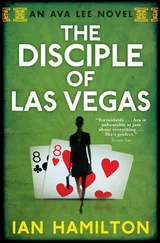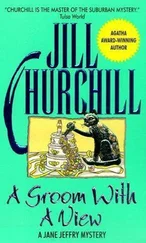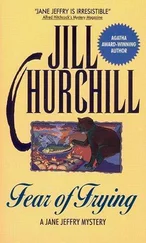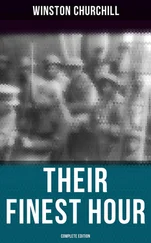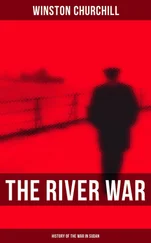Winston Churchill - Ian Hamilton's March
Здесь есть возможность читать онлайн «Winston Churchill - Ian Hamilton's March» весь текст электронной книги совершенно бесплатно (целиком полную версию без сокращений). В некоторых случаях можно слушать аудио, скачать через торрент в формате fb2 и присутствует краткое содержание. Год выпуска: 2018, Издательство: epubBooks Classics, Жанр: История, Прочая документальная литература, на английском языке. Описание произведения, (предисловие) а так же отзывы посетителей доступны на портале библиотеки ЛибКат.
- Название:Ian Hamilton's March
- Автор:
- Издательство:epubBooks Classics
- Жанр:
- Год:2018
- ISBN:нет данных
- Рейтинг книги:4 / 5. Голосов: 1
-
Избранное:Добавить в избранное
- Отзывы:
-
Ваша оценка:
- 80
- 1
- 2
- 3
- 4
- 5
Ian Hamilton's March: краткое содержание, описание и аннотация
Предлагаем к чтению аннотацию, описание, краткое содержание или предисловие (зависит от того, что написал сам автор книги «Ian Hamilton's March»). Если вы не нашли необходимую информацию о книге — напишите в комментариях, мы постараемся отыскать её.
London to Ladysmith
Ian Hamilton's March — читать онлайн бесплатно полную книгу (весь текст) целиком
Ниже представлен текст книги, разбитый по страницам. Система сохранения места последней прочитанной страницы, позволяет с удобством читать онлайн бесплатно книгу «Ian Hamilton's March», без необходимости каждый раз заново искать на чём Вы остановились. Поставьте закладку, и сможете в любой момент перейти на страницу, на которой закончили чтение.
Интервал:
Закладка:
DIAGRAM EXPLAINING HAMILTON'S ACTION AT ISRAEL'S POORTE, THE 25TH OF APRIL.
Four hours passed, during which the Boers indulged the hope that the frontal attack would be pushed home, and at the end of which they found their right flank turned and their rear threatened. Immediately, with all the hurry of undisciplined troops who feel a hand on their communications, they evacuated the position, and, running to their horses, galloped away. The Canadians and Grahamstown Volunteers thereupon arose and occupied the line of kopjes, and thus the door was opened and the road to Thabanchu cleared. Our losses in this smart action were about twenty killed and wounded, among whom were no less than five officers of the Grahamstown Volunteers. The Dutch left five corpses on the field, and doubtless carried away a score of wounded.
General Hamilton, pushing on, entered Thabanchu the same night, and the British flag was again hoisted over the town. The Imperialist section of the community, who had in the interval between the evacuation and reoccupation of the town been subjected to much annoyance at the hands of the Boers, were naturally shy, and afraid to make any sign of welcome. The southern commandos from Dewetsdorp and Wepener had by hard marching already passed behind Thabanchu with their convoys. On the 26th French and his Cavalry, covering the march of Rundle's (Eighth) Division, arrived, and, since he was a lieutenant–general, took the command out of Hamilton's hands for a time.
I had come northwards from Dewetsdorp with the Cavalry Brigades, and was an eyewitness of the operations round Thabanchu which occupied the 26th and 27th. Thabanchu Mountain is a lofty and precipitous feature of considerable extent, and, towards the south, of indefinite shape. To the north, however, it presents a wide bay, on whose grassy shores rising from the more arid plain the Boer laagers were reported to stand. The enemy held the crest of the crescent–shaped mountain with guns and riflemen, and in order that no one should pry behind it they extended on their right a few hundred trustworthy fellows, who, working in the most scattered formation, gave to their position an enormous front of doubtful strength.
On the afternoon of the 26th, with a view to further operations on the following day, a force of Mounted Infantry, supported by galloping Maxims and a Horse Battery, was sent to reconnoitre, and if possible to hold the hill, henceforward called 'Kitchener's Horse Hill.' The troops gained possession of the feature without fighting, though a few Boers were seen galloping along the ridges to the right and left, and an intermittent musketry fire began. A garrison to hold the hill was detailed, consisting of Kitchener's Horse, a company of the Lincoln Mounted Infantry, and two Maxim guns; but just as the sun sank this plan was changed by the officer commanding the force, and the whole were ordered to retire into Thabanchu. On the Indian frontier it is a cardinal rule to retire by daylight and sit still when overtaken by night in the best position at hand. In this war experience has shown that it is usually better to remain on the ground, even at a heavy cost, until it is quite dark, and then to retreat, if necessary. The reason of the difference is, that while close contact with an Afridi armed with a four–foot knife, active as a cat and fierce as a tiger, is to be avoided as much as possible, no soldier asks better than the closest contact with a Dutchman. But though the teaching of both wars may seem contradictory on many points, on one point it is in complete agreement: twilight is the worst time of all to retire.
The consequences of this ill–timed change of plan were swift. The Boers saw the retrograde movement, and pressed boldly forward, and Kitchener's Horse, finding themselves closely engaged, were unable to move. A sharp and savage little fight followed in the gloom. The Boers crept quite close to the soldiers, and one fierce greybeard was shot through the head eight paces from the British firing line, but not until after he had killed his man. The reports which reached the town, that Kitchener's Horse were 'cut off' on a kopje four miles from the camp, induced General French to send the Gordon Highlanders to their relief. This battalion started at about ten o'clock, and were put on their road to the northward. But in the darkness and the broken ground they lost their way, marched five miles to the south, occupied another hill, and did not rejoin the command until the afternoon of the next day, an absence which, since no inquiries could discover them, caused much anxiety. Kitchener's Horse meanwhile, under Major Fowle, of the 21st Lancers, made a plucky defence, beat off the Boers, and managed at about eleven o'clock to effect their retreat undisturbed. The losses in the affair were twelve or fourteen men killed and wounded, including one officer, who was shot through the head.
Very early the next morning the whole force marched out of the town, and French's operations were this day designed to compel the enemy to retreat from his positions in rear of Thabanchu Mountain, and if possible to surround some part of his force. The information at General French's disposal could not, however, have been very accurate, for in my telegram of the 26th I wrote that 'more than 2,000 Boers' were collected to the north of Thabanchu, and the Press Censor erased this and substituted the words 'small parties.' If this latter view had been correct it is probable that the operations of the following day would have been attended by a greater measure of success.
The plan was clear and vigorous. Gordon's Cavalry Brigade was to move to the right, round the east of Thabanchu Mountain, and force their way into the plains behind it. It was hoped that the Lancers, of which this brigade is entirely composed, would find some opportunity for using their dreaded weapon. Hamilton was to push back the weak Boer right, and open the way for Dickson's Cavalry Brigade to pass through and join hands with Gordon. Rundle, whose infantry were tired from their long march from Dewetsdorp, was to demonstrate against the Boers' centre and hold the town.
The action opened with the re–occupation of Kitchener's Horse Hill by Smith–Dorrien's Infantry Brigade, who advanced in determined style, and by a sweeping movement of Ridley's Mounted Infantry. Both these undertakings, which were directed by Hamilton, prospered. The Boer right, which was very thin, was brushed aside, and the road for the cavalry was opened. At, and not until, nine o'clock, French's leading squadrons began to appear on the plain, and by ten the whole of Dickson's Brigade had passed through the gap and were safely extended in the undulating plains beyond.
DIAGRAM EXPLAINING FRENCH'S OPERATIONS ROUND THABANCHU, THE 26TH AND 27TH APRIL.
Wishing to see, for the first time, Cavalry and Horse Artillery working in suitable country, I rode down from my post of observation on Kitchener's Horse Hill and trotted and cantered until I caught up the squadrons. It was evident that the left enveloping arm was making good progress. Already we could almost look into the bay behind Thabanchu Mountain. If Gordon were only getting on as well we might join hands with him, and enclasp a goodly catch of prisoners. So the brigade continued to advance from ridge to ridge, and presently Boers began to gallop across the front to escape, as was thought, from the net we were drawing round them. At all of these—the Horse Artillery and the pom–poms—British pom–poms at last—fired industriously. But as the enemy kept a respectful distance and an open formation, only a few were seen to fall. The others did not fly very far, but gathered together in what soon became considerable numbers outside the net, near a peaked hill, which does not appear in my sketch, but which the reader may bear in mind as lying to the left rear of the turning Cavalry.
Читать дальшеИнтервал:
Закладка:
Похожие книги на «Ian Hamilton's March»
Представляем Вашему вниманию похожие книги на «Ian Hamilton's March» списком для выбора. Мы отобрали схожую по названию и смыслу литературу в надежде предоставить читателям больше вариантов отыскать новые, интересные, ещё непрочитанные произведения.
Обсуждение, отзывы о книге «Ian Hamilton's March» и просто собственные мнения читателей. Оставьте ваши комментарии, напишите, что Вы думаете о произведении, его смысле или главных героях. Укажите что конкретно понравилось, а что нет, и почему Вы так считаете.

